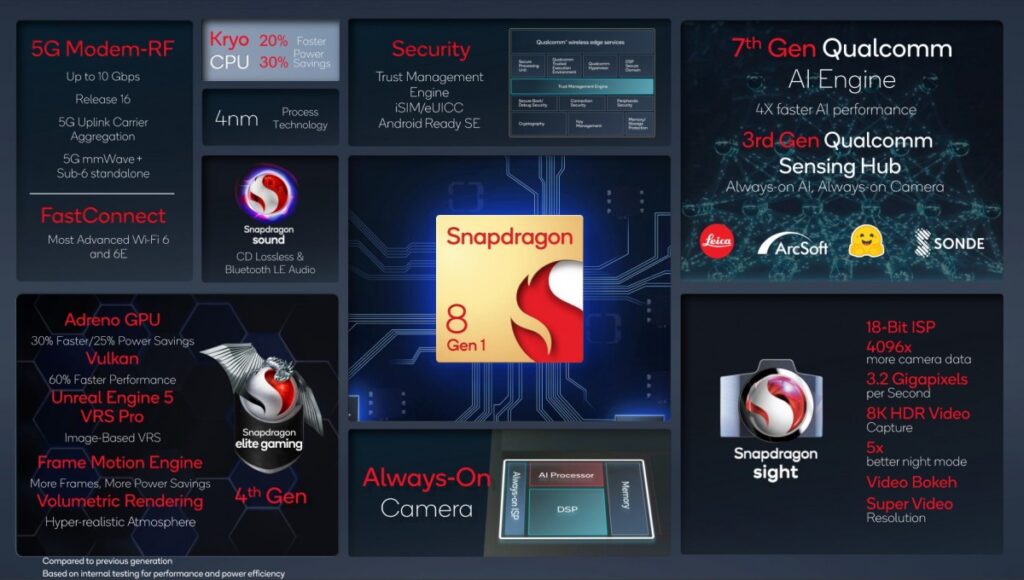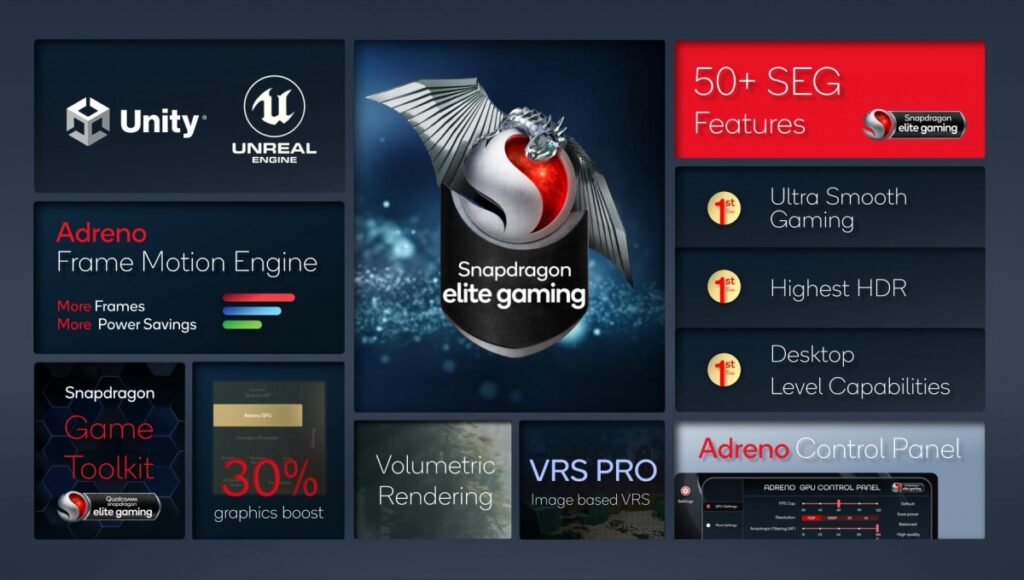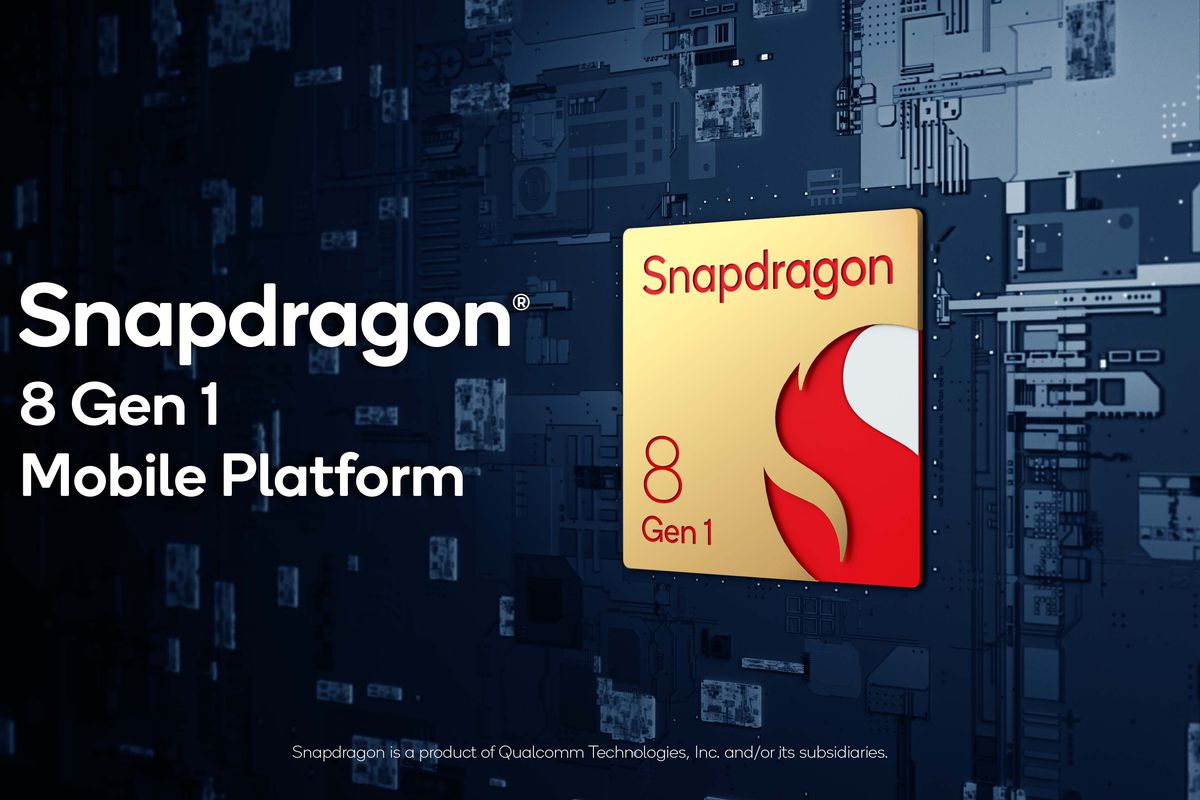Qualcomm has introduced its next-generation processor for premium Android handsets, which boasts a number of enhancements. It is, in some ways, a complete departure from prior designs, as it uses the new ARMv9 instruction set and a new naming structure. The first commercially available phones containing the new processor will be available by the end of the year, so we won’t have to wait long to see it in action.

Meet the Snapdragon 8 Gen1
The Snapdragon 8 Gen 1 uses a new naming method that uses a digit for the class (8 being flagship) and a generation for the generation. It’s Qualcomm’s first 4nm chipset, as well as the first to adopt the new CPU architecture.
The CPU’s three cluster design is retained, although the cores are now based on ARMv9 designs. This indicates that the primary processor will be a Cortex-X2 with a clock speed of 3.0GHz. Three performance cores based on the Cortex-A710, which will run at 2.5GHz, and four efficiency cores based on the A510, which will run at 1.8GHz, will support it.
Overall, the new CPU will be 20% faster than the Snapdragon 888’s while also cutting battery consumption by up to 30%.
Moving on to the GPU, thanks to its revolutionary architecture, the new Adreno claims a 30% performance gain and a 25% power savings. Qualcomm created three Elite Gaming features, one of which will help developers establish a balance between performance and power efficiency.

With the Adreno Frame Motion Engine, the GPU can render a game at twice the frame rate while consuming half the power. Alternatively, it can maintain the same FPS while halving the power demand.
Desktop-class volumetric rendering is another new capability. For dramatic lighting effects, such as the God rays that level designers tend to adore, volumetric lighting is used. Variable Rate Shading Pro, an image-based VRS, is also new, and it should make it easier to integrate VRS into more games. Qualcomm has teamed with some of the most well-known game studios to guarantee that their games take full advantage of the hardware.
The Snapdragon 8 Gen 1 has an integrated X65 5G modem that can give potential peak speeds of 10 Gbps and supports both sub-6 and mmWave operation. It also offers carrier aggregation for the uplink for the first time.
Local connectivity benefits from Wi-Fi 6 and 6E capabilities, as well as Bluetooth enhancements. The new chip supports Bluetooth LE Audio and can stream CD Lossless Audio via Bluetooth LE, which is a significant improvement over existing technology. One source can broadcast one or more audio streams to an unlimited number of recipients using the Broadcast Audio capability. Stereo recording, as well as voice-back channels, will be supported.
The Trust Management Engine, which would reside beneath the hypervisor, was also introduced by Qualcomm to strengthen the chip’s security (which was introduced with the 888). Even if the security zones above it are breached, the TME will remain protected.
The first Snapdragon 8 Gen 1-powered flagships will be available before the end of the year, with announcements expected soon.









